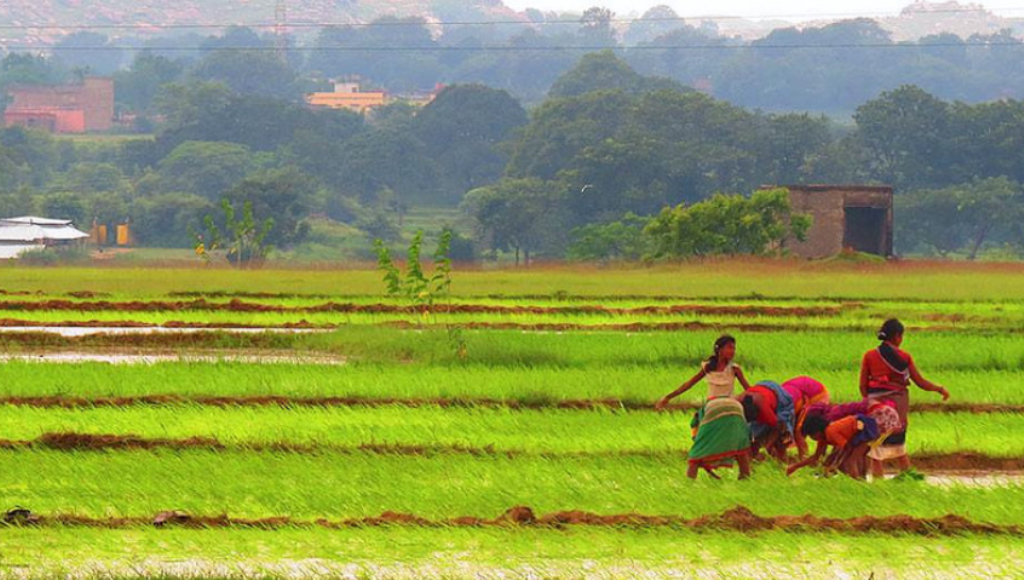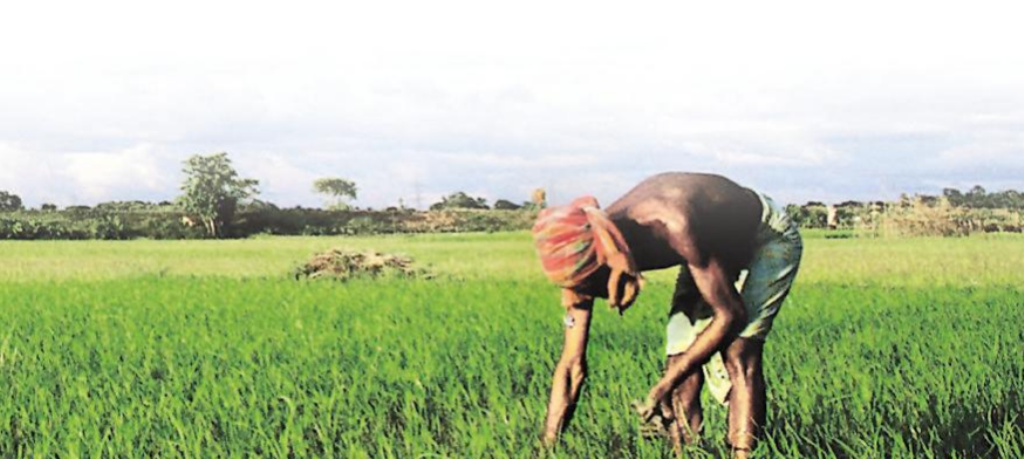
Climate change has posed the biggest challenge so far to Agricultural productivity. It has led to drought like conditions in some parts of the country and heavy, erratic rainfall in other regions. The severity and unpredictability of weather has wreaked havoc on crop productivity, especially in rain-fed regions of our country. Many farmers have shifted to short duration crops that can withstand harsher conditions, instead of cultivating staple grains as before. The low productivity and shifts in the cultivated crops are posing a challenge for food security for our growing population.
The farmer is also battling increasing production cost, scarcity of farm labour, declining or stagnating yield and farm income. The vulnerability of farm profitability is pushing farmers towards desperate and reckless use of chemicals to manage crops and enhance yields, making them a target for unscrupulous suppliers. The increased use of fossil fuels, polluted soil and water resources and loss ofbiodiversity are additional environmental concerns.
Rice is the staple food of more than 60% of the world’s population especially in South East Asia. Among the rice growing countries in the world, India has the largest area under rice crop i.e., 43.86 million hectare (Mha) and ranks second in production (163.5 MT) next to China (203 MT). India’s average rice productivity is below world average of 4 MT/ha and much lower as compared to China’s 6.5 MT/ha. Therefore, India is contributing 1.4 times more land area for producing 1.2 times less rice as compared to China, this is a very harmful statistic for our growing economy.
The low crop productivity can be addressed by improved seed technologies and agronomic intervention. Cultivation of hybrids is one such option as hybrid yields are 15-25% more than the open pollinated varieties (OPV). This has been demonstrated in many countries in the region, China has 50% of rice area under hybrids, while in Bangladesh, India, Indonesia and Philippines hybrid rice accounts for less than 10 % of the area under rice cultivation.
Hybrids have been key in increasing productivity of maize and cotton in India, besides the major crops, hybrids of sorghum, pearl millet and many vegetable crops are also preferred by farmers over OPVs. It has been observed that progressive farmers purchase seeds (OPV or hybrid) every season, with a rice seed replacement rate of 26 % (Seednet.com) recorded for India. Hybrid rice has been cultivated in India for the past three decades and has been supported by introduction of new hybrids both by public institutions and private industry.
A strategy needs to be developed for refining hybrid seed production to enhance the seed yields, to reduce the cost of hybrid by strengthening the existing institutional mechanism. Efficient planning is required for geographical diversification and to establish year-round hybrid seed production capabilities.

Involvement of seed agencies in the public sector, NGOs, and farmers cooperatives along with private seed sector will help identify promising hybrids for different regions/ conditions and also create much needed awareness among the farmers about the advantages of cultivating hybrid rice. A public-private partnership is being encouraged by leading rice research institutes like Indian Institute of Rice research (IIRR) that includes screening and evaluation of rice hybrids for their agronomy and resistance against target insect pests/pathogens. There is a plan to launch National Hybrid Research Consortium (NHRC) to further strengthen Public – Private Partnership towards the goal of increasing rice productivity through the adoption of hybrid rice technology.
Myths and facts about hybrid Rice
|
Myth |
Fact |
|
Hybrids have higher requirement of water and fertilizer |
Hybrids are stress tolerant, short duration crops, hence require less water and fertilizer |
|
Hybrids have higher percentage of broken rice post milling |
Hybrid milling breakage percentage is comparable to OPVs and meets FCI standards |
|
Hybrids are suitable only for irrigated regions |
Hybrids are stress tolerant and hence better adapted to rainfed regions e.g. Jharkhand |
Intensive agriculture over the years has led to soil deterioration at physical, chemical and organic level due to surface water run-off, erosion and nutrients deficiency. The receding water table and saline soils have further complicated the soil health.
An agricultural system with low inputs, high returns and sustained growth while conserving environment called Conservation agriculture (CA) is the need of the hour. CA utilizes scientific knowhow and technology to improve and conserve input resources like soil health and water to achieve economically and ecologically sustainable agricultural production. Soil carbon retention by minimal tilling and cover crops, nutrient and weed management along with diversified crop rotation are critical attributes of CA. The advantages of CA were demonstrated in a 7-year study conducted at Indian Agricultural Research Institute (IARI), New Delhi with zero tillage and rice-wheat crop rotation. The study showed a higher sustainable yield index for rice-wheat croppingsystem with 40% labour cost saving, 30 % lower water usage, 60-70 litres/ha lower fossil fuel consumption and 20-25% seed saving, that led to Rs.7000/ hectare net increase in farmer’s income.
Direct Seeded Rice (DSR) is also part of CA that drastically reduces water usage – saves 30-40% water, reduces labour costs by ~40-45% and fuel costs for puddling and transplanting by 55-60%, additionally allows for higher planting density. Theoptimal plant population for DRS field is 40 plants/ sqm as compared to average 20-22 plant/ sqm in transplanted field.In India 28% (12.3Mha) of the area under rice cultivation practices DSR. Besides water conservation and lower fuel consumption, DSR can reduce greenhouse gas(GHG) emissions by 30-40%.

Since DSR eliminates water logging, it makes farm mechanization possible for the rice field. Though customization is required to develop scale appropriate machines for seeding and harvesting. This is another area, where both economic and policy support is required to encourage and smoothen the adoption of mechanization.
The technology can be exploited for maximum gain by selecting soil and region-specific cropping system, managing soil nutrients, planting Fe and Zn deficiency tolerant rice varieties, appropriate seed treatment, proper weed management, especially in the initial growth stages and using scale appropriate mechanization.Extensive extension services for creating awareness amongst farmers and related businesses regarding the technology, resources and providing training for new practices would go a long way in adoption of hybrid rice and DSR. The farmers can also be provided easy credit and assured selling pricefor practicing DSR.Although, CA practices need to be optimized across locations, crops and cropping systems based on sound benefit-cost economics, multi-level intervention by farmers, researchers, extension personnel and policy makers to analyse and understand how conservation can integrate with other technologies, willhelp in promotion of CA.
Our aim of doubling farmer income is a challenge for the scientific community, farmers and policy makers. Together we need to overcome the past mindset and explore the opportunities that technology and newer agronomic practices have to offer for sustainable agriculture. With the rising food demand for the growing population and paucity of resources, increasing farm productivity in the most efficient manner, seems to be the only sustainable path for improving farmer income and environment.
Writen By Dr Shivendra Bajaj, Executive Director, FSII















